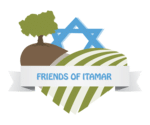Succoth 5769
A Blessing for the Fruit of the Trees – Succoth 5769 The secret of the Four Species The great Cabalist and student of the famous Ramchal, Harav Moshe David Wali, was an author of
Yom Kippur 5769
Yom Kippur message Oct. 8th 2008 Tet Tishtay 5769 Seemingly, this week’s Parasha has a strange beginning as it opens with “And Moses went and spoke these words to all I
Rosh Hashanah 5769
Rosh Hashanah Thoughts 5769 In a world that we balance our lives between the practical accomplishments of our goals and spiritually yearning for the unreachable, Elul is a time tha
Parashat Ki Tavo
Parshat Ki Tavo Elul 5768-2008 Hashem created this world through the method of dichotomy, thus we can distinguish good from evil. We are all familiar with the concept of opposites-
Parashat Shoftim
Parshat Shoftim Elul 5768-2008 “When you shall besiege a city for a long time in making war against it to take it, you shall not destroy its trees by forcing an axe against t
Parashat Pinchas
Parshat Pinchas July 18, 2008 In the late 1800’s an officer in the British army and an avid researcher of biblical sites, by the name of Charles Wilson published an important
Parashat Balak
Parshat Balak July 11, 2008 King Balak forms a union with the neighboring nations in order to attack Am Yisrael. Much publicity has been given to the great and mighty nation that b
Parashat Shelach
Parshat Shelach June 20, 2008 “Send people to the Land of Canaan” The Land of Israel is the inheritance of our forefathers and was planned by Hashem for the Jewish peop
Parashat Bamidbar
Parshat Bamidbar June 6, 2008 The book of Bamidbar opens with Hashem commanding Moshe Rabeynu to count the nation. And G-D spoke to Moses in the desert of Sinai in the tabernacle o
Lag Baomer Message
Lag Baomer-2008 May 23, 2008 Lag Baomer has always been a great day in itself; before the days of Rabbi Shimon Bar Yochay, and even before the counting of the Omer. It is the day t

